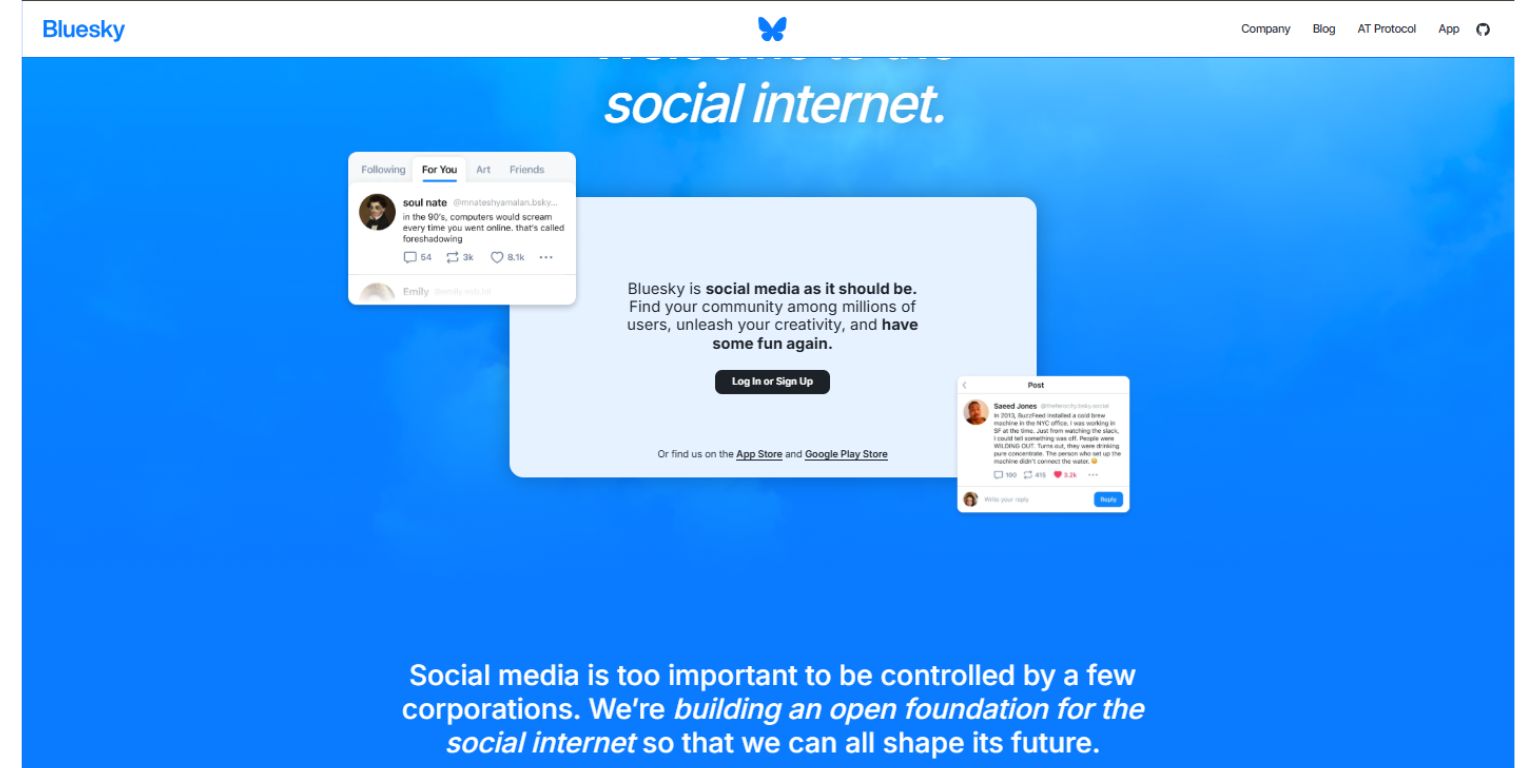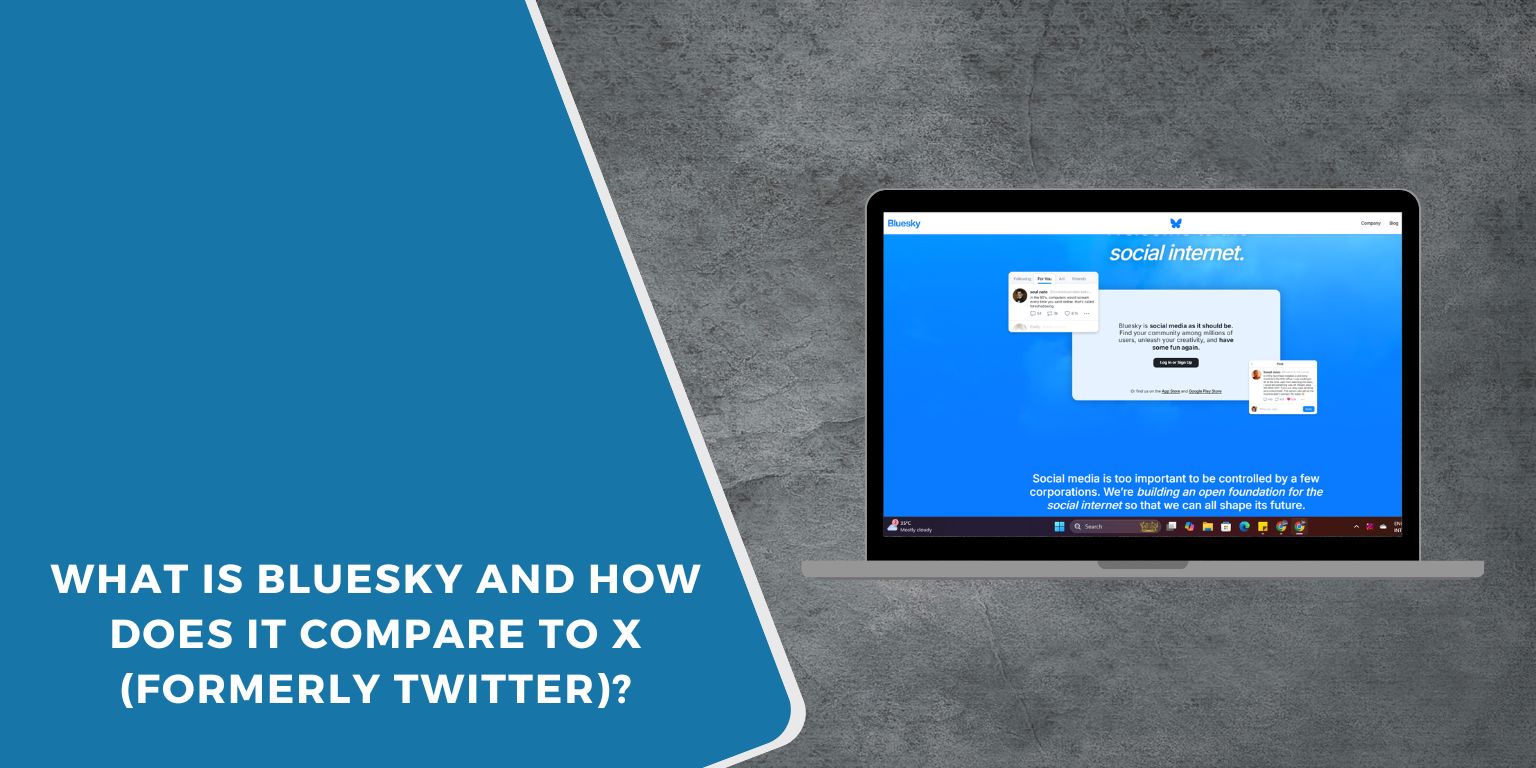X, once called Twitter, has changed a lot since Elon Musk bought it. Some users enjoy the updates. Others feel lost in the new rules, shifting features, and unclear direction. Changes in the algorithm, account policies, and naming led many to look for different places to post and connect.
One name that keeps coming up is Bluesky. This new platform has drawn attention because it works in a new way. Jack Dorsey, the co-founder of Twitter, helped support Bluesky’s early development. That alone made people curious. But the tech behind it and how it treats users are what make it stand out.
What Is Bluesky and Where Did It Come From?
 Bluesky started as a side project when Jack Dorsey still led Twitter. The idea was to build a new way for people to share content without relying on just one big company. Bluesky runs on something called the AT Protocol, which lets developers and users work across apps that connect to the same social space. Instead of a single platform like X, it’s more like a shared network.
Bluesky started as a side project when Jack Dorsey still led Twitter. The idea was to build a new way for people to share content without relying on just one big company. Bluesky runs on something called the AT Protocol, which lets developers and users work across apps that connect to the same social space. Instead of a single platform like X, it’s more like a shared network.
What makes it different is its open design. While apps like X and Threads use private systems to control content and data, Bluesky works more like email. You can use many apps to join the same network, and you keep control of your own identity.
Bluesky is a microblogging service. It lets users post short updates, follow others, and reply. But unlike most social apps, it offers more control. People can pick or build their own feed settings, use different moderation tools, and even switch between apps without losing their account.
X vs. Bluesky: What’s the Difference?
| Feature | X (Formerly Twitter) | Bluesky |
|---|---|---|
| Ownership | Controlled by Elon Musk’s X Corp | Runs on open protocol, not one owner |
| Feed Type | Algorithm-driven | Users choose or create their own |
| Moderation | Central rules by X | Users pick filters or services |
| Data & Account | X controls your data | You keep your identity |
| Developer Access | Limited API | Open tools for builders |
Some key things to know:
- Bluesky lets you own your content and ID.
- You aren’t tied to one app.
- X is easier for reaching large groups fast.
- Bluesky is smaller but gives more freedom.
How Bluesky Works Behind the Scenes
Bluesky runs on the AT Protocol. This means apps can connect to the same social space. People don’t need to use the same app to interact. You could post from one app, and your friend could comment from another—all inside the same network.
The protocol supports account portability, which means you can switch apps without losing your followers or posts. Your profile stays with you, not the app company. That’s different from how X or Threads work.
Developers can build their own apps on top of this system. Each app can offer its own rules, layouts, and tools. But they all talk to the same core network. This setup helps new ideas grow while keeping users connected.
Some users like that no single company owns Bluesky. It avoids the power and control seen in big tech platforms. While Bluesky is still early, its network structure gives users and developers more space to shape things the way they want.
What Type of People Are Moving to Bluesky?
Different kinds of users are joining Bluesky:
- People who left X after changes in policy or ownership
- Creators who want control over their content
- Developers testing new ideas with the AT Protocol
- Journalists and artists tired of large algorithm filters
Bluesky shares space with other platforms like Mastodon and Threads, but it stands apart. Mastodon uses the Fediverse, a different system, while Threads comes from Meta and is still closed in many ways. Bluesky focuses more on user control and open access.
Is Bluesky Right for You?
 Pros:
Pros:
- You control your account and feed.
- You can move between apps easily.
- Developers have open access to build tools.
- You avoid one-size-fits-all rules.
Cons:
- Smaller user base right now.
- Invite-only or limited access in some places.
- Not ideal for big brand outreach yet.
You may like Bluesky if:
- You want less noise and more personal choice
- You care about privacy or open systems
- You enjoy testing new tools
You might wait if:
- You need a big audience right now
- You rely on ad tools or brand deals through platforms like X
Final Take: New Platform, Old Goals
Bluesky brings fresh structure, but the goal is familiar—share ideas, connect with others, and build communities. Unlike X or Threads, Bluesky puts users in control without locking them into one app.
It’s still small, still growing. But it offers something people have asked for: freedom, control, and clear ownership of their online voice. For those tired of corporate-driven apps, Bluesky might be worth watching—or joining.
Have you tried Bluesky? Do you like the idea of open social apps? Share your thoughts below. And if this helped you, send it to someone who’s thinking about leaving X.


